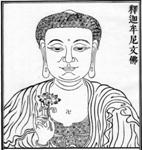Lately the question of practice in the modern world has been on my mind. This is because, in six weeks, I will begin a new training program, working as a Chaplain Resident at a local hospital. I’ve had this role before, but as a volunteer. Each time I returned to City Center to continue the practice of zazen and ceremony together with the sangha (practitioners) here. Now all of that may change.
Within the monastery, life is simple. There are only a handful of activities that take place on a given day, and they are largely conducted in silence, except for the harmony of chanting in a group. In contrast, the modern world offers myriad things to do, the rise and fall of mechanical and human sounds, and the motion of technology which is much faster than the humble pace of walking. City Center, as an urban temple whose residents work within and outside the building, can be said to be midway between these two realms.
All of these activities and sensations can be thought of as forms of stimulation. So there can be a subtle, or not so subtle, sense of agitation that comes with modern life simply because of the amount of stimulation you experience. For that reason, it’s sometimes said that practice outside the monastery is an advanced form.
Yet Buddhist practice has flourished in every kind of civilization that human beings have developed. How? By pointing us again and again to our true selves, our fundamental nature.
There’s an old story that can give us a sense of this. In ancient India there was a great Teacher whose name was “Wisdom Jewel,” Prajñatara.
For many, many years Prajñatara was thought to be a man, but recent scholarship indicates that Prajñatara was a woman. It’s not clear to me whether this is simply a result of the confusion surrounding Bodhidharma, this Teacher’s disciple, or whether it’s a more accurate understanding than before. In any event, we know that Prajñatara was an extremely skillful practitioner whose teaching reverberates to this day. One conversation in particular is very revealing.
Prajñatara had been invited by a local King to dinner one evening. The King must have spent some time with the Teacher because it seems that, at this dinner, a question arose for him. He asked, “Why do you not study the Sutras?” This question demonstrates the King’s own practice, an awareness of Prajñatara’s forms and an inquiring mind about even something as fundamental as what practice might be. And it’s certainly a reasonable question. The Sutras are said to be the words of the Buddha, foundational instruction in the way to lead an awakened life. So how could Prajñatara be such a great Teacher without the benefit of that history?
Prajñatara replied, “This poor wayfarer does not dwell in body and mind when breathing in, does not get involved with myriad circumstances when breathing out; this way I recite the sutra hundreds, thousands, millions of times.” Ah ha! Here we see the Ancestor telling the student that practice is not some secret that resides in a musty, old book. It is this very life itself, unfolding breath by breath, yet not identified with the conditional world. This is practice that is available to us at any moment, in any place. In fact, it’s a practice which requires a presence that is sustained and intimate with the moment now, regardless of whether the moment now is standing at a street corner while the ambulance screams past you, or sitting on a cushion in a firelit cabin in the mountains.
So when living in the modern world, it’s helpful to foster the mind of inquiry, like the King, and it’s helpful to remember that practice always occurs right where you are, like Prajñatara. This is not to say that you shouldn’t study the Sutras. That musty, old wisdom can be inspiring, like a window into someone else’s insight. But you should know that an awakened life is not something that is attained through scholarship; it’s freedom and stillness within the very activity of the moment. And that’s not anything to write home about.

